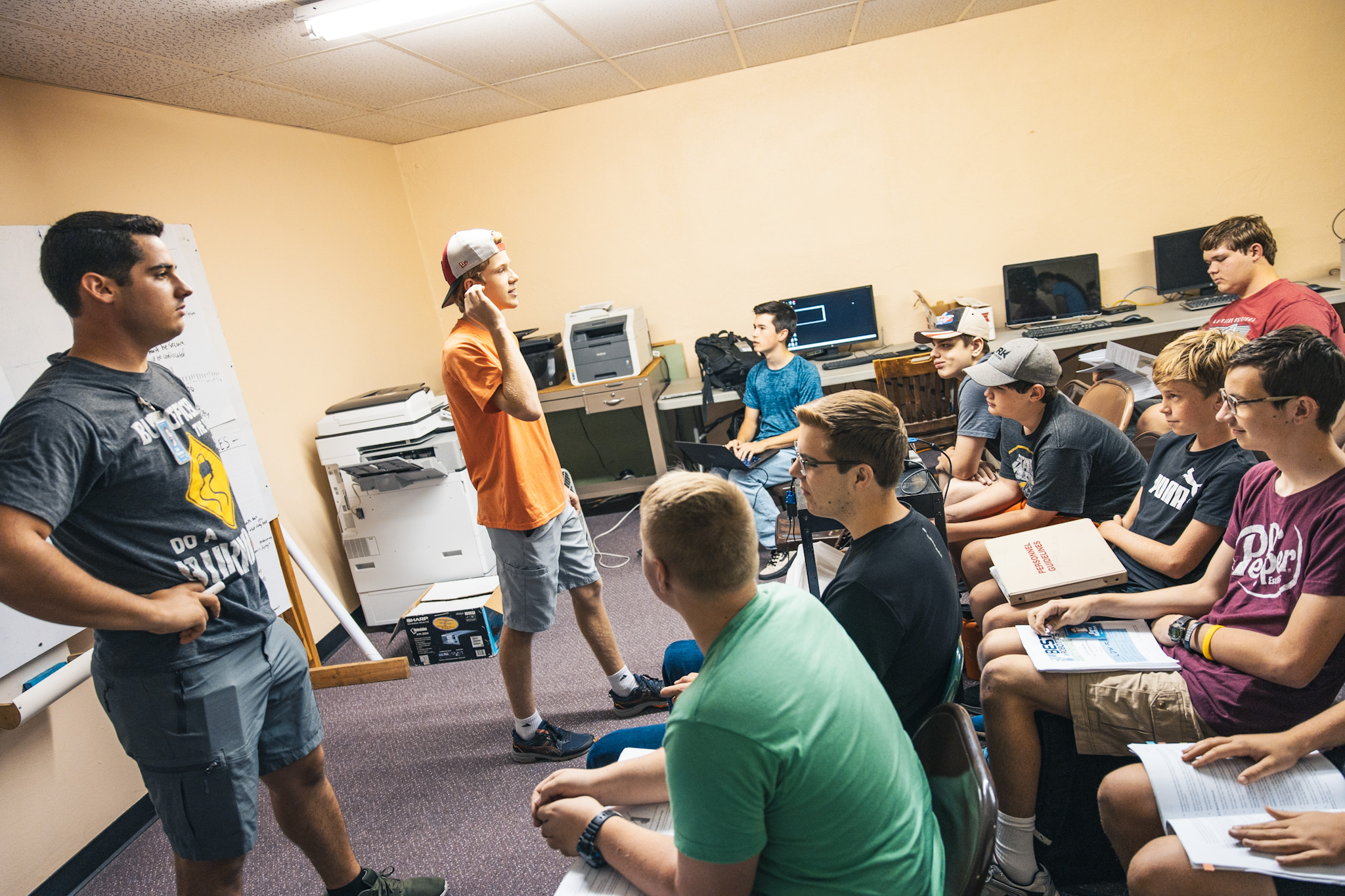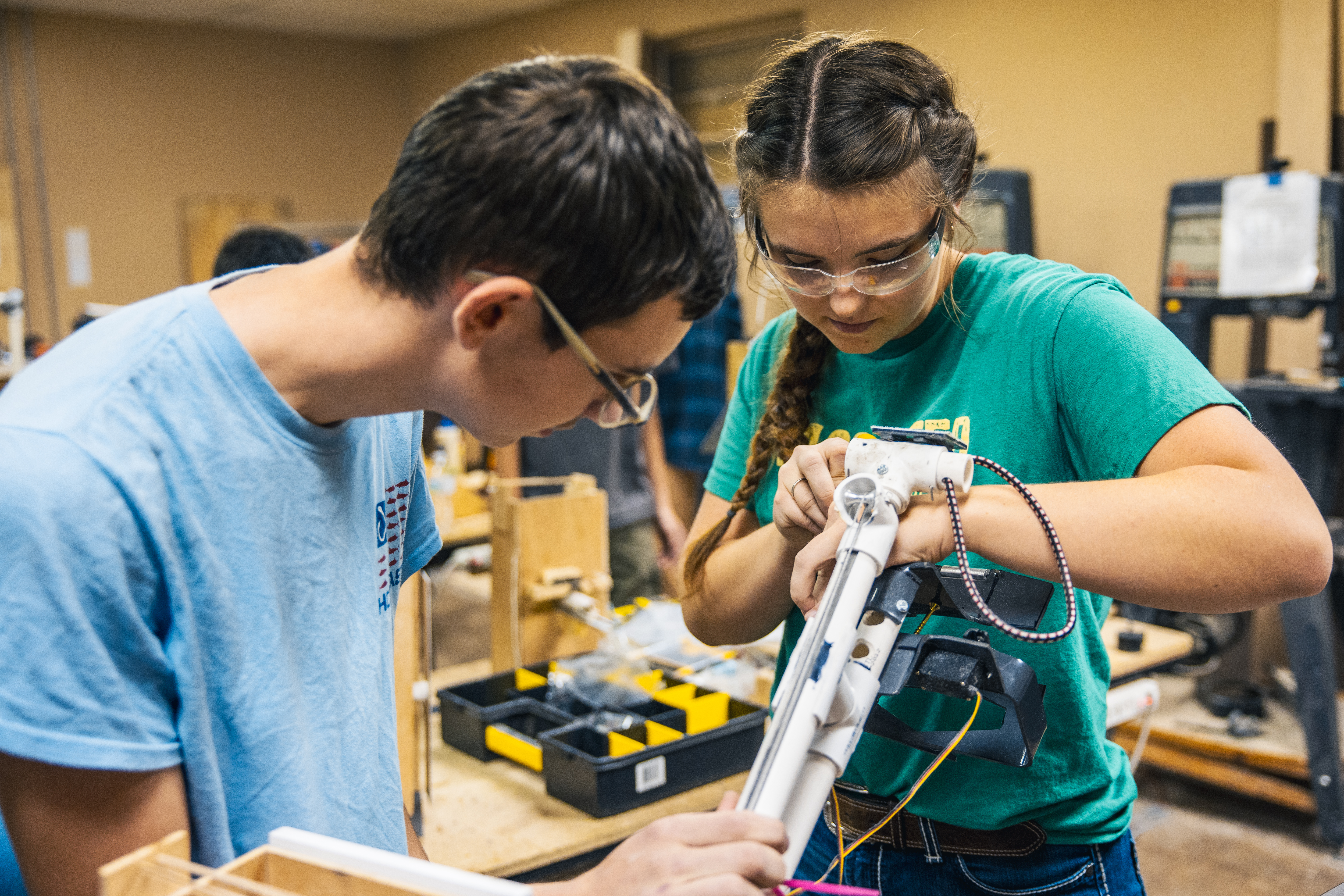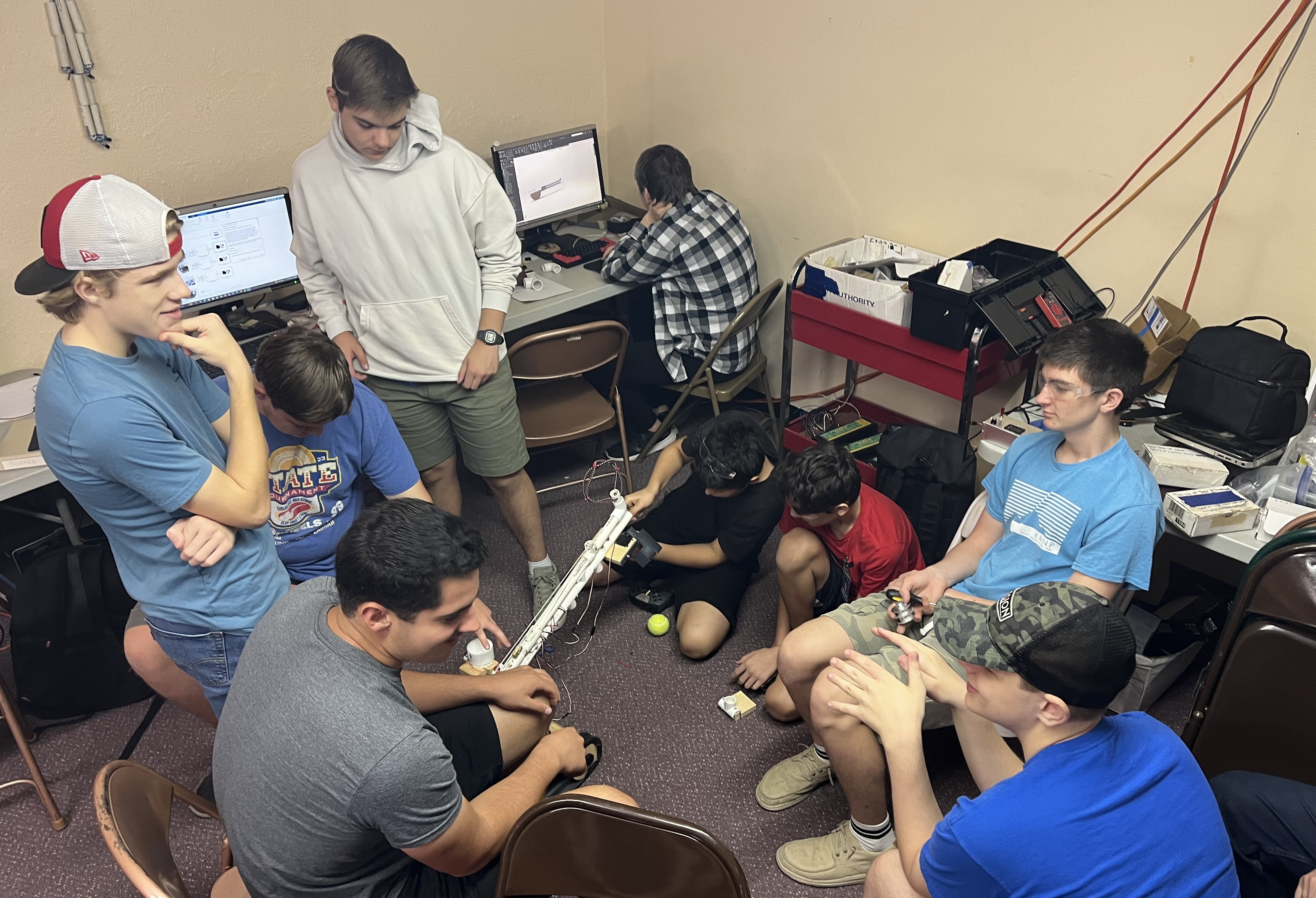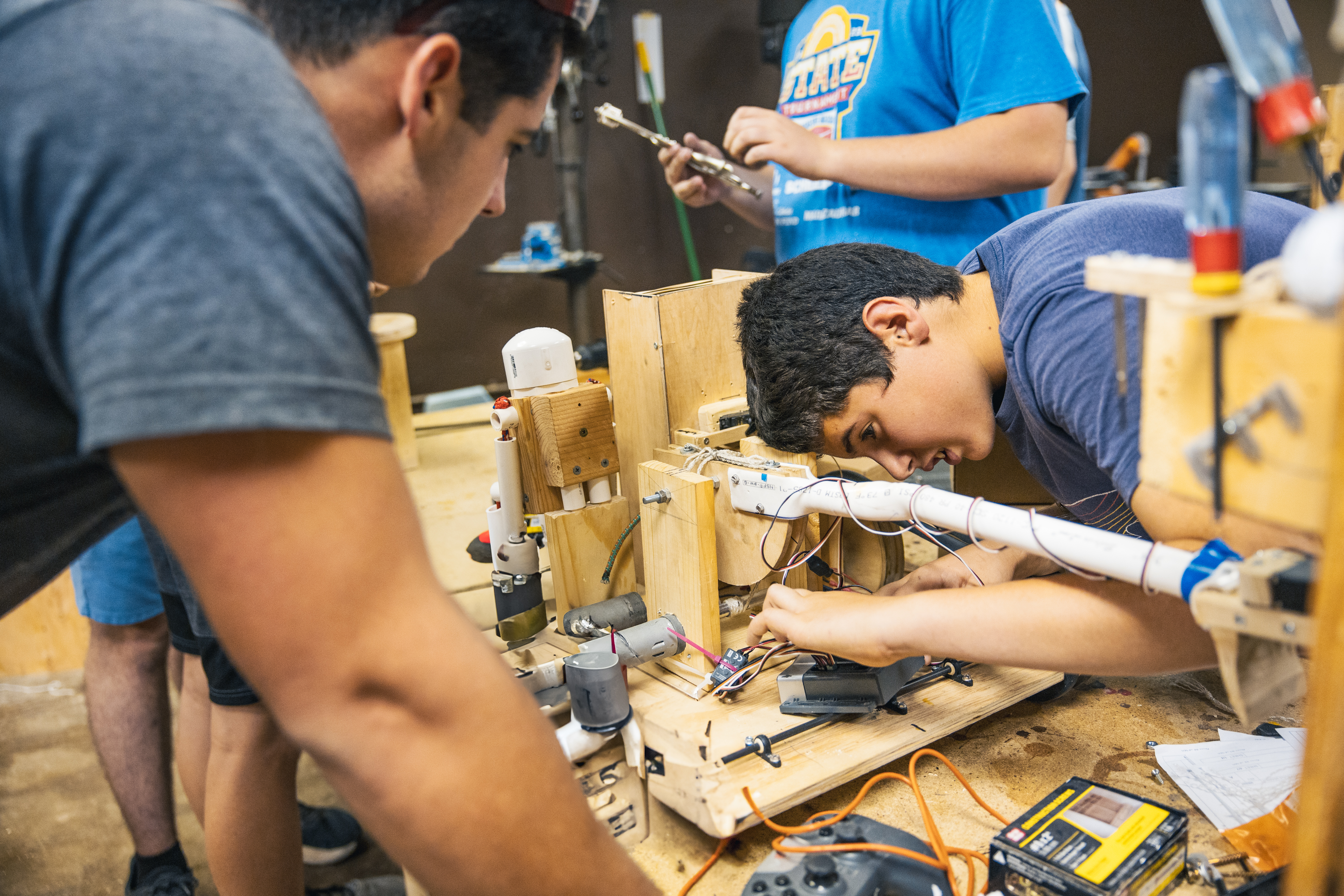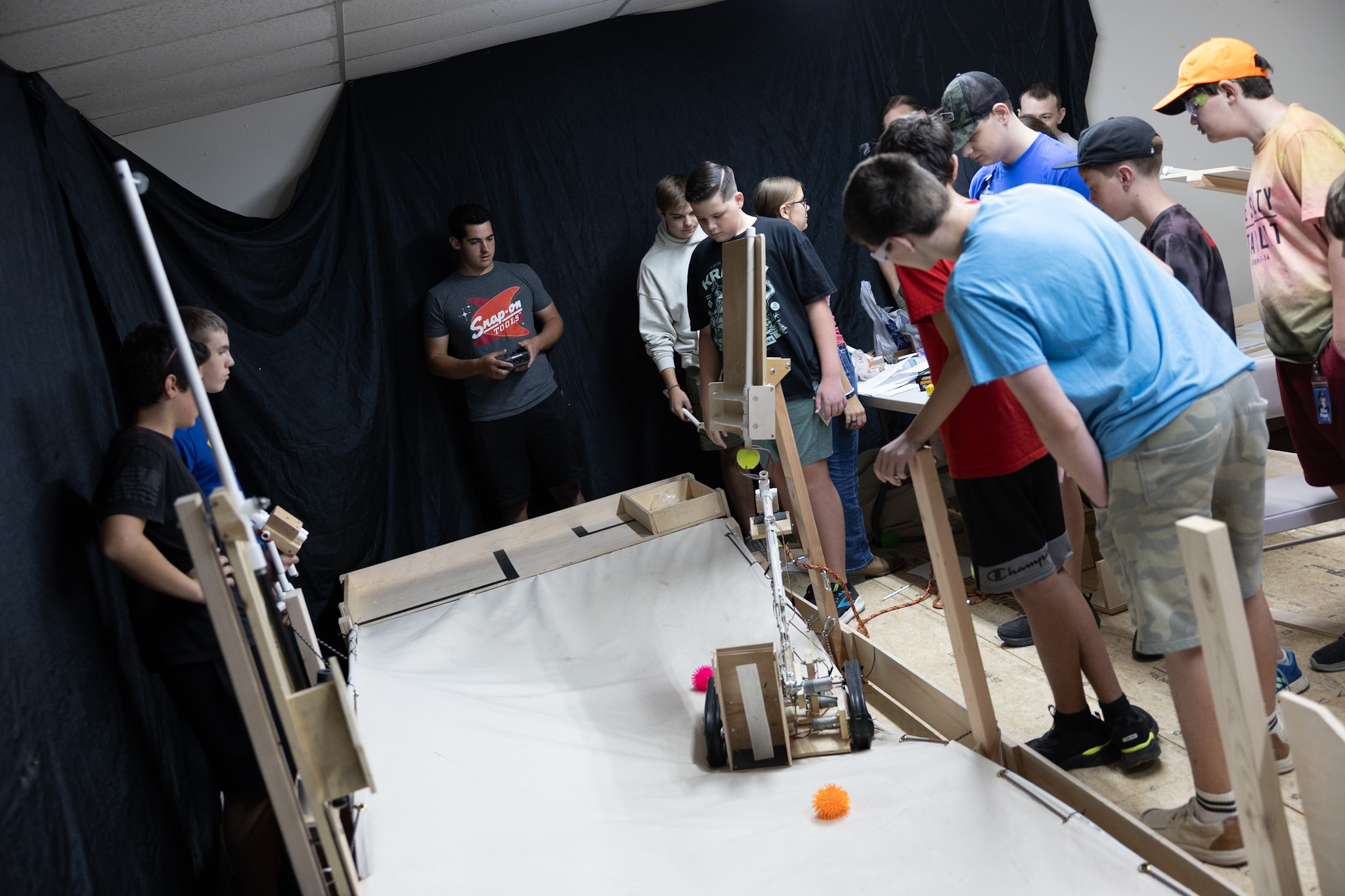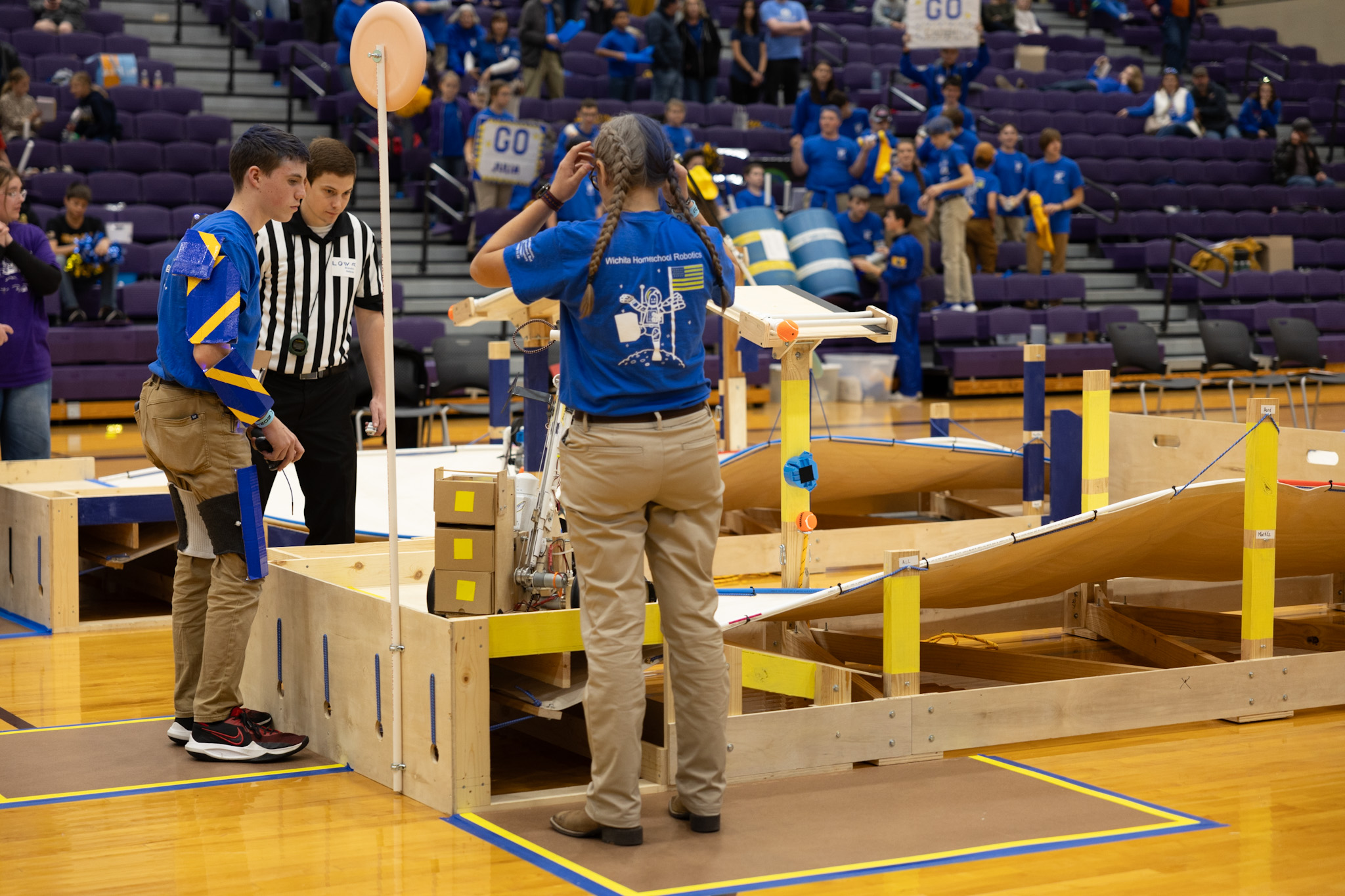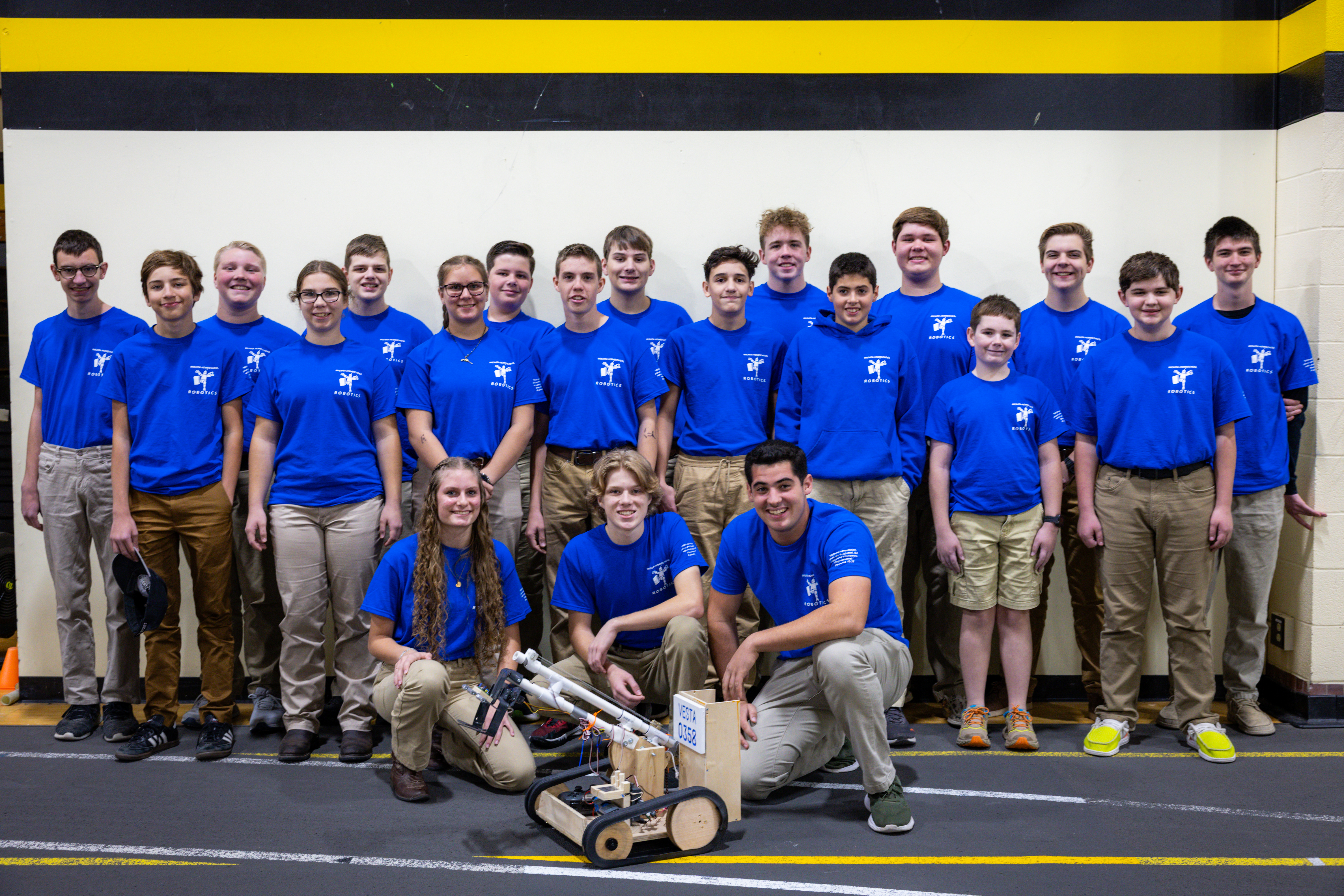
About The Program
Our program allows high school students, who are currently homeschooling, to understand the various aspects of the engineering process. Depending on the sub-team in which the students are placed, they may improve skills in using tools useful for constructing the robot or booth, learn how to cooperate through teamwork, appreciate good communication between sub-teams, be successful in fundraising, and recognize the importance of public relations. In addition, if they are placed in the notebook sub-team, the students writing skills can be greatly improved, and students assigned to the electronics sub-team learn how to program the robot. Furthermore, if they are designated to the booth sub-team, the student has an excellent chance to grow artistically. Students are also encouraged to tryout for driving the robot on Game Day. Wichita Homeschool enables any student to specialize in some aspect of robot design, construction, and programming, and it provides them with necessary skills that can be used later in their lives and in their careers.


